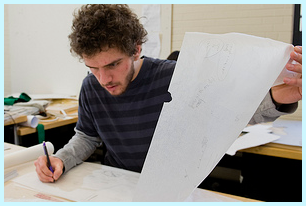Abbreviations
Academic degrees
Omit periods in abbreviations of academic degrees: SB, SM, MArch, MASc, MBA, MBAn, MCP, MEng, MFin, PhD, ScD.
Academic or alumni status
Omit periods in abbreviations of academic status or Alumni Association designations used at MIT:
- John Smith G not John Smith, graduate student
- John Smith G (biology)
- Jane Smith HM not Jane Smith, honorary member
MIT alumni degrees usually omit the course number and are listed as follows:
- Undergraduate: Walter Frey ’56
- Graduate: Martin Tang SM ’72
- Undergrad and grad: Philip Greenspun ’82, SM ’93, PhD ’99
Use a reverse single quotation mark before to indicate graduation year for alumni.
Acronyms
Omit periods in well-established two-letter acronyms (e.g., UK, UN, US) and in all acronyms of three or more letters (e.g., MIT, NATO, FBI).
Institutional acronyms should be introduced immediately after the first mention of the full name. For example: OpenCourseWare (OCW) is a large-scale, web-based electronic publishing initiative. But note that acronyms should be kept out of headings and are unnecessary if the subsequent text fails to use them. In long reports, the full name along with its acronym may be repeated after a long stretch without reference to one or the other.
State names
When abbreviating the name of a state, use the postal code rather than the traditional abbreviation:
- MA not Mass.
- CT not Conn.
- Washington, DC not Washington, D.C.
Use a comma after a state abbreviation in running text (e.g., The conference took place in Cambridge, MA, on June 3).
Units of measurement
Omit periods after abbreviated units of measurement: 6 m, 100 cm, 32 km, 12 sq ft.
Scientific terms
Spell out the names of molecules, followed by the short form in parentheses (e.g., carbon monoxide (CO)). Additional mentions may use the shortened form.
Capitalization
In running text, follow the Chicago Manual of Style down style of capitalization:
- President Kornbluth, the president
- the provost; the chancellor; the dean
- Department of Physics, the department
- the Departments of Biology and Chemistry, the departments
- Center for Real Estate, the center
- the School of Science, the school
But note the following exceptions:
- the Institute
- the Association (i.e., the MIT Alumni Association)
- the Corporation (i.e., the MIT Corporation)
- the Libraries (i.e., the MIT Libraries)
- The Press (i.e., The MIT Press)
- Institute Professor
Academic and professional titles
Academic and professional titles are capitalized when they immediately precede a name:
- President Sally Kornbluth
- Professor Duong
- Associate Professor Paloma Duong
- Provost Cynthia Barnhart
- Professors Chomsky and Flynn
- Drs. Glass and Seneff*
When titles are used to indicate position or occupation and are used in apposition to a name, they are lowercased:
- Ian A. Waitz, vice chancellor for undergraduate and graduate education
Named professorships should be capitalized in their entirety:
- Ford Professor of Engineering
- Robert T. Haslam Professor of Chemical Engineering
- Class of 1954 Career Development Professor
*To avoid confusion, do not use Dr. before the names of individuals who do not hold medical degrees (with the exception of the religious title “Rev. Dr.”).
Academic fields
Names of academic fields are capitalized only when they appear as part of a department or program name:
- He majored in biology. He earned a PhD in biology (field of study implied).
- He was a student in the Department of Biology. He was a student in Biology (department implied).
Prizes, awards, and honors
Capitalize names of prizes, awards, and honors:
- Infinite Mile Award
- György Kepes Fellowship Prize
- Searle Scholar HHMI Investigator
- AAAS Fellow (but Professor Smith was elected as a fellow of the American Association for the Advancement of Science)
Consistency list
A
ad hoc (roman)
advisor (not adviser)
African American, Asian American (unhyphenated)
and (not &, except in acronyms and company names)
the Association (when referring to the MIT Alumni Association)
AY2022, academic year 2022, the 2022 academic year (not AY2021–2022 or the 2021–2022 academic year)
B
bachelor's degree, bachelor of science
big data
Black (capitalize when referring to Black people)
biweekly
boot camp
Building [#] (e.g., We met in Building 54.). When listing the full/formal building name, the building number should follow in parentheses: Our offices are located at the Wiesner Building (Building E15). (See also: Room)
C
the Campaign, the MIT Campaign for a Better World
catalog (when referring to the MIT Course Catalog)
Class of 2022
co-author, co-chair, co-director, co-sponsor
college, the college (See also: MIT Stephen A. Schwarzman College of Computing)
Commencement
Communication Requirement
the Corporation (when referring to the MIT Corporation)
Course [#], the course, courses (At MIT, course numbers and abbreviations refer to courses of study leading to specific academic degrees and, by extension, to the departments or programs offering those degrees. For example, Course 6 refers to the Department of Electrical Engineering and Computer Science.)
D
data is/are (follow author)
de facto (roman)
doctoral degree, doctorate
E
e-commerce
edX
e.g., (roman, followed by a comma)
The Engine, the Engine Room
ex officio (roman)
F
faculty is/are (lowercase "faculty," follow author's preference for singular or plural)
fall term, fall 2021
federal
first-year student (not freshman)
full-time
FY2022, fiscal year 2022
G
G (when referring to a graduate student, e.g., John Smith G)
H
half-time
head (do not capitalize head or associate/assistant head of a department, e.g., Political Science head David A. Singer)
health care; health-care providers
HM (when referring to an honorary member of the MIT Alumni Association, e.g., Jane Smith HM)
home page
I
i.e., (roman, followed by a comma)
Indigenous
Infinite Corridor
the Institute
Institute Professor
internet
IT (not I/T, except in reports produced by Information Systems & Technology)
in situ (roman)
in vitro (roman)
in vivo (roman)
J–L
k-12, k-12 education
Latina, Latino, Latinx
the Libraries (when referring to the corporate entity, the MIT Libraries)
M
MacVicar Faculty Fellow
makerspace
master's degree, master of science
Media Lab
"mens et manus" (roman, in quotes); include English translation where possible (e.g., MIT’s motto is "mens et manus," or "mind and hand.")
MicroMasters
MIT community
MIT xPro
MIT 2030
MIT150
MITx
multiyear
N
Native American
Nobel laureate, Nobel Prize in economics, physics, etc.
O
online
OpenCourseWare
P
part-time
postdoc, postdoctoral
The Press (when referring to The MIT Press)
Professor (not Prof.)
Q–R
The Quest, the MIT Quest for Intelligence
reacquaint, readmit, reorder (follow Merriam-Webster's)
Room [building #]-[room #]; lowercase when listing more than one location (e.g., Meetings took place in rooms 1-123, 4-145, 56-114 and E25-11.). When listing the full/formal room name, the building and room number should follow in parenthesis: The event will be held in the Amdur Room (6-233) on Friday. (See also: Building)
S
SA+P, School of Architecture and Planning
school, the school
MIT Stephen A. Schwarzman College of Computing, subsequent mentions: MIT Schwarzman College of Computing or the college (never "the College of Computing")
semiweekly
spring term, spring break
staff is/are (follow author)
startup
stormwater
subject, subjects (Subjects are what many people typically think of as courses, i.e., a series of classes offered during a given academic period.)
T
Task Force 2021
Team 2020
they/their (acceptable as a singular pronoun; always use the pronouns preferred by the subject)
U
underrepresented minorities, URMs
University of California at Berkeley (use “at,” not a comma; UC Berkeley for subsequent mentions), University of California at Davis, etc.
URL
V–W
web, on the web (not World Wide Web, unless the reference is historical)
website
well-being
white (use lowercase when referring to white people)
X–Z
X-ray
0–9
2D, 3D
the 21st century; 21st-century technology
Faculty names
Upon first naming a faculty member, include his or her full rank and title (as of June 30, 2022) and full name (include the middle name or initial only if regularly used by the faculty member). Thereafter, use the first and last name, last name only, or shortened title and last name. For example: Associate Professor of Architecture Robert Smith continued his research in the building technology program. Professor Smith also collaborated with colleagues in the Department of Civil and Environmental Engineering to develop joint subjects for the interdisciplinary minor in energy studies.
Numbers
Spell out one to nine in running text, and use digits for 10 and higher but spell out all numbers that begin a sentence (or rewrite the sentence).
Use a comma in numbers of four or more digits: 1,413
but remember to leave four-digit years unpunctuated: 1949, 2020
and to convert the comma used by Europeans to indicate a decimal point.
Spell out fractions if they are relatively simple, such as "one third." Otherwise, use a slash (e.g., 1/125).
Use digits in all measurements: 3 in, 6 ft, 10 m.
Use metric terms in situations where they are the universally accepted form of measurement, where the metric measurement is a significant round number, or where the measurements in a piece of research are already presented in metric. Be consistent with metric usage within a given report.
No hyphen is needed with the following prefixes to denote fractional elements or large multiples: pico, nano, micro, milli, centi, deci, deka, hector, kilo, mega, giga, tera.
Use all digits in number ranges: 149–167; 2019–2020. Don't use a hyphen or an en dash in a number range introduced by “from” (e.g., “from 20 to 25” not “from 20-25”).
Use digits and the “%” symbol to indicate percentages: 25%
Use a dollar sign to indicate a dollar amount in running text: $35, not 35 dollars.
To indicate large monetary sums, the unit may be spelled out (e.g., $35 million) or abbreviated in passages containing numerous sums (e.g., $20K, $35M, $4.3B).
In phone numbers, use hyphens rather than periods, parentheses, or dashes: 617-253-1702.
MIT addresses follow this model: Room E28-100; Room 1-131 (not Building 1-131 or Building 1 Room 131).
MIT course numbers are written with Arabic (not Roman) numerals: Course 10, Course 3-C.
MIT subjects are rendered with the subject number first and no punctuation between the subject number and title: 1.01 Introduction to Civil Engineering; HST.960 Creative Writing for Physicians. Take care to reference the subject name and number that were in effect during the reporting period, not the ones in effect when you're writing your report. To consult a particular academic year's subject titles, see the online archive of subject descriptions.
Spelling and punctuation
Use American spellings (follow Merriam-Webster's Collegiate Dictionary, Eleventh Edition) or use Merriam-Webster's online dictionary.
For clarity, we here in Cambridge prefer the Oxford comma (aka the serial comma): Tom, Dick, and Harry.
Time and date
8:30 am, 7 pm (not 7:00 pm)
AY2022 or academic year 2022 (not AY2021–2022 or academic year 2021–2022)
fall 2021, fall term
FY2022 or fiscal year 2022 (not FY2021–2022 or fiscal year 2021–2022)
September 16 (not September 16th)
September 16, 2020 (not 16 September 2020)
spring 2022, spring term
the 21st century; 21st-century technology
the ’90s, the ’60s (use a reverse single quotation mark before to indicate a decade)
Titles of works
Follow headline style capitalization for titles of works.
Italicize (no quotes)
- books
- exhibits
- video games
- long poems
- movies
- musical compositions
- named blogs
- periodicals
- plays
- podcasts (series)
- radio or TV programs
"Roman and Quote"
- articles
- blog entries
- chapters
- lectures
- manuscripts (not accepted for publication)
- papers
- podcasts (single episodeS)
- single episodes of a continuing radio or TV show
- short stories
- theses
- video blogs
- workshop or panel presentations
Simply Capitalize (no quotes or italics)
- conferences (A substantive or thematic name given to a conference, workshop or panel may be quoted.)
- lecture series
- manuscripts (work in progress)
- newsletters
- projects
- reports
- symposia
- websites
- web pages
- workshops (A substantive or thematic name given to a conference, workshop or panel may be quoted.)
Typography and style
Write ordinal numbers on the line, reserving superscript and subscript for scientific and mathematical expressions: 1st, not 1st; the greenhouse gas CO2.
Keep headings brief (never longer than one line).
Do not use bulleted lists excessively, but do use bullets rather than numbers or letters (unless you want to indicate a hierarchy). You also may substitute em dashes for bullets when the list items are sentence fragments (frequently, beginning with a verb).
Embed URLs in running text rather than spelling them out (e.g., "CoLab Radio’s mission is to encourage the open sharing of ideas," not "For more information, see: http://colabradio.mit.edu/about/." If a name is followed by an acronym, include that acronym in the hyperlink (e.g., Division of Comparative Medicine (DCM)).


